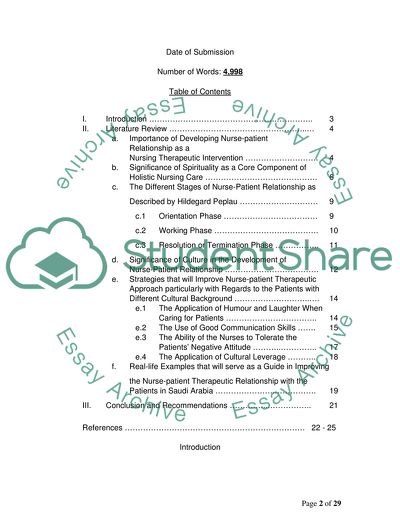Cite this document
(Significance of Therapeutic Relationships between Nurses and Patients Research Paper, n.d.)
Significance of Therapeutic Relationships between Nurses and Patients Research Paper. Retrieved from https://studentshare.org/nursing/1744128-thereapeutic-realationships-in-nursing-in-different-culture
Significance of Therapeutic Relationships between Nurses and Patients Research Paper. Retrieved from https://studentshare.org/nursing/1744128-thereapeutic-realationships-in-nursing-in-different-culture
(Significance of Therapeutic Relationships Between Nurses and Patients Research Paper)
Significance of Therapeutic Relationships Between Nurses and Patients Research Paper. https://studentshare.org/nursing/1744128-thereapeutic-realationships-in-nursing-in-different-culture.
Significance of Therapeutic Relationships Between Nurses and Patients Research Paper. https://studentshare.org/nursing/1744128-thereapeutic-realationships-in-nursing-in-different-culture.
“Significance of Therapeutic Relationships Between Nurses and Patients Research Paper”, n.d. https://studentshare.org/nursing/1744128-thereapeutic-realationships-in-nursing-in-different-culture.


